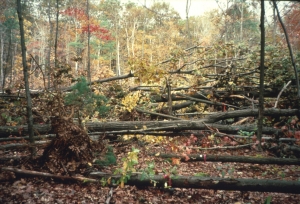You are here
Study Offers Alternatives for Forest Management after Storms

A Harvard Forest study soon to be published in the journal Ecology highlights 20 years of data from a forest disrupted by a major hurricane simulation in 1990. Although post-storm management strategies generally involve removal of dead and damaged trees, the Ecology study suggests that forests recover more readily when they are left alone.
- Read the National Science Foundation's press release.
- Read the Harvard Gazette story.
- Read the Worcester Telegram & Gazette story.
- Download the original research paper (Ecology pre-print).
- Learn more about the Harvard Forest hurricane pulldown experiment.
Photographs
(click images to download high-res)
In 1990, the Harvard Forest hurricane pulldown area was a jumble of downed trees. Photo by Marcheterre Fluet.
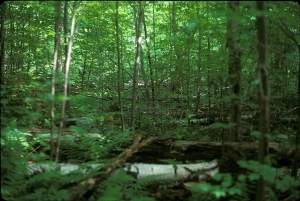 By 1999, the Harvard Forest hurricane pulldown area showed significant regeneration. Photo by Audrey Barker-Plotkin.
By 1999, the Harvard Forest hurricane pulldown area showed significant regeneration. Photo by Audrey Barker-Plotkin.
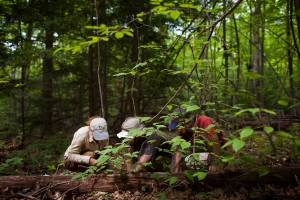 22 years after the experiment began, Harvard Forest ecologists continue to monitor downed wood in the hurricane pulldown experiment. Photo by John Hirsch.
22 years after the experiment began, Harvard Forest ecologists continue to monitor downed wood in the hurricane pulldown experiment. Photo by John Hirsch.
 Following the massive hurricane of 1938, Al Cline, then-director of the Harvard Forest, surveys one of many local ponds used to store the enormous volume of trees that were salvage-harvested. Photo courtesy of the Harvard Forest Archives.
Following the massive hurricane of 1938, Al Cline, then-director of the Harvard Forest, surveys one of many local ponds used to store the enormous volume of trees that were salvage-harvested. Photo courtesy of the Harvard Forest Archives.
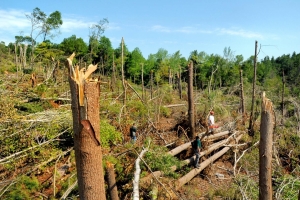 Broken and snapped-off trees at the tornado impact area of the McKinstry Brook Wildlife Management Area in Southbridge, Massachusetts, 2011. This area has been left to regenerate naturally. MassWildlife photo by Bill Byrne.
Broken and snapped-off trees at the tornado impact area of the McKinstry Brook Wildlife Management Area in Southbridge, Massachusetts, 2011. This area has been left to regenerate naturally. MassWildlife photo by Bill Byrne.
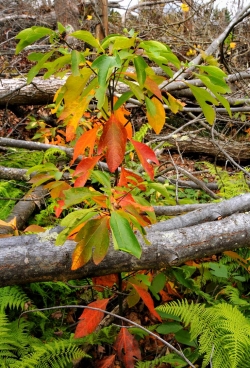 Sassafras comes to life in the McKinstry Brook WMA tornado impact area. MassWildlife photo by Bill Byrne.
Sassafras comes to life in the McKinstry Brook WMA tornado impact area. MassWildlife photo by Bill Byrne.

